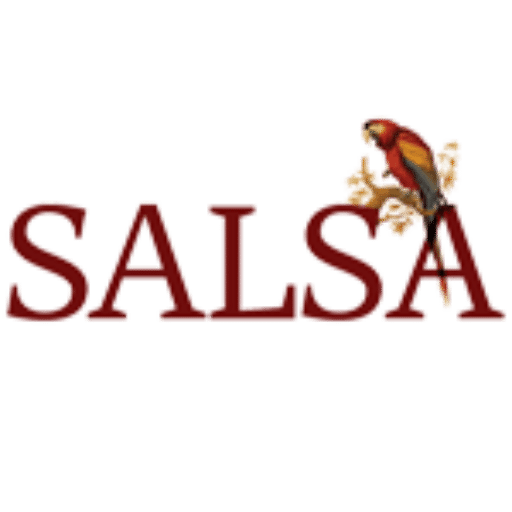
SALSA XIII Biennial Conference – Artistic Works
 SALSA XIII Biennial Conference
SALSA XIII Biennial Conference
Artistic Works
[expand title=”The Indigenous Benches of Brazil Exhibition” tag=”h2″]
Mariana Brazão, Independent Curator / University of Virginia Alum 2019 (mab3dr@virginia.edu)
Marina Frúgoli, Coleção BEI (marina.frugoli@bei.com.br)
Adriana Greci Green, Fralin Museum of Art, University of Virginia (ag2wq@virginia.edu)
Carving wooden benches is a longstanding artistic practice for the Indigenous peoples in Brazil. These objects represent the cultural expressions of 25 tribes from different regions of the country, including the extreme northwestern Amazon, in the states of Roraima and Amazonas; the region of Calha Norte, between Pará, Amapá and Guianas; and further to the Xingu Indigenous Park, located in the Center-South of Pará and North of Mato Grosso. These benches are artistic wooden stools utilized for ceremonial purposes or everyday use by Brazil’s Indigenous populations in their villages. Some are zoomorphic, representing animals of the Brazilian fauna, while others take a more conventional seat shape, painted with natural pigments or carved in eloquent designs. In recent years, the production and distribution of these Indigenous works have increased throughout the country, and Coleção BEI, an art-publishing house based in São Paulo, has recently shown their collection of over 600contemporary benches. These exhibitions have had widespread effects, including the insertion of these dynamic objects into the contemporary art world while at the same time affording greater agency and authorship to the artists.
The Indigenous Benches of Brazil exhibition at the Fralin Museum of Art is an international collaboration with Coleção BEI and funded in part by the Mapping Indigenous World’s Lab, the Americas Center/Centro de las Américas, and the Mellon Indigenous Arts Initiative at UVA. The exhibit features a collection of these benches with the purpose of centering Indigenous voices and perspectives. Dialogue surrounding the exhibit seeks to expand Indigenous notions of place and space while honoring Indigenous environments, language, and heritage.
[/expand]
[expand title=”Non Axebo (Our Roots)” tag=”h2″]
Wihtner FaGo
Angela Giattino, London School of Economics
[Session 3 of Panel 6: Wellbeing as a Process of Mutual Creation]
The Amazonian hip-hop artist Wihtner FaGo (Erick Wihtner Fasabi Gonzales) and the anthropologist Angela Giattino propose a co-written rap song, “Non Axebo” (Our Roots), sung in both Shipibo and Spanish, whose lyrics pay homage to the Shipibo-Conibo rich cultural traditions. Wihtner FaGo is a young rapper and songwriter who belongs to the Shipibo-Conibo indigenous people, which constitutes the majority ethnic group of the Ucayali region of the Peruvian Amazon. Wihtner’s work and artistic activism address the issue of how Shipibo-Conibo wellbeing is constantly threatened by systematic discrimination, a lack of access to social welfare services such as education and health, environmental issues, and narco-trafficking. The song Non Axebo is an attempt to combine native and foreign knowledges and views on wellbeing, in order to use art as a resource in the struggle of marginalized indigenous groups to overcome cultural loss and socio-political voicelessness through refashioning both their local and global identity.
[/expand]
[expand title=”Ignition” tag=”h2″]
Juan Castrillón, University of Pennsylvania
İgnition features the ritual symbolism of fire and the transformation of media and space in contemporary environmental crises. This installation in progress intervenes at Brooks Hall at the University of Virginia – one of the first landmark buildings devoted to studying natural history in America and subsequently, the location of the Department of Anthropology– with three essay films done by Juan Castrillón in collaboration with Christopher Hewlett. These essay films, understood as thinking-through-gaps artifacts (Rascaroli 2017), explore an audiovisual rendition of Brooks Hall in which it appears as a place able to refract hopes and tensions between plural worlds. The installation combines images projected over the façades of the building, indoor locations and surrounding areas of the anthropology department. The installation is a posthumous retrospective of two Colombian painters, Alberto Vélez and Roberto Osorio, who developed for more than three decades a series of paintings featuring industrial mining, floods, fires; and the poetic transformation of healing and sorrow in the Amazon. In its triptych format, the installation shakes the skin of Brooks Hall with excruciating and crackling sounding-images, as a way to leave indelible marks of uncertainty, care, and resilience on those who see the installation from a remote location.
[/expand]
–Jeremy M. Campbell (SALSA President 2020-2023), Laura R. Graham (SALSA President-Elect 2023-2027), Laura Zanotti (Secretary-Treasurer 2017-2020), George Mentore (SALSA 2021 Conference Organizer), Laura Mentore (SALSA 2021 Academic Program Chair), Juan Alvaro Echeverri (SALSA Webmaster).
Please send all inquiries about this conference to: salsaconference2021@gmail.com
